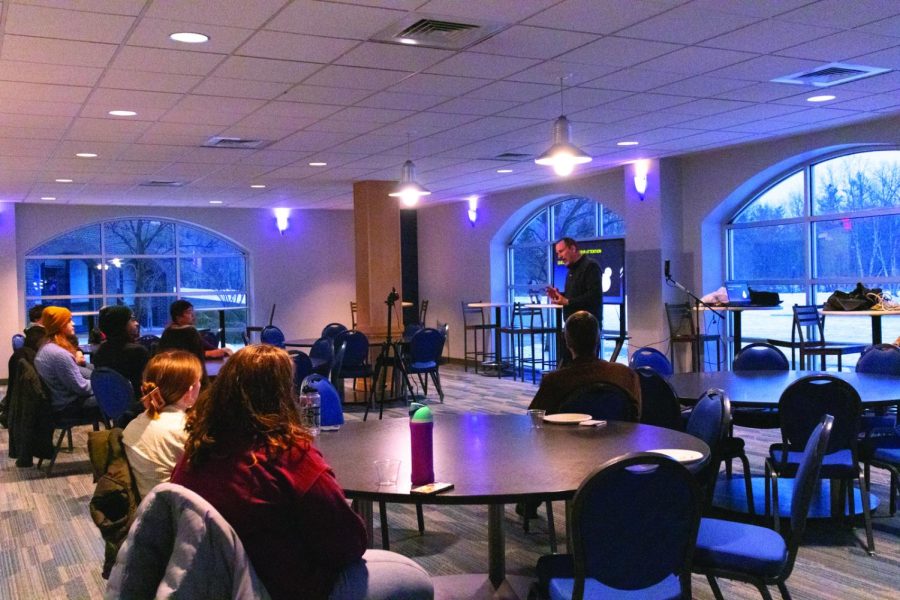Astronomy Club hosts Dr. Larry Molnar
Feb 27, 2023
On Feb. 24, the Astronomy Club hosted its first speaker event featuring Dr. Larry Molnar, a physics and astronomy professor at Calvin University who has studied the evolution of binary stars for about 10 years. Due to his recent work on contact binary stars, which are stars that are in close proximity to each other and ultimately meld together in orbit, Molnar has gained attention in the field of astronomy.
With the aid of his Calvin University students, Molnar published a study in the spring of 2017 outlining techniques for identifying and predicting luminous red novae. Since that time, Molnar and his team have made significant progress in their knowledge of contact binaries and red novae, laying the groundwork for future close examination of these events.
“I thought that his closeness to GV and the local astronomical community and his pioneering reach on contact binary star systems would make an interesting lecture and would be good for members and GV students to check out,” said Astronomy Club President Colin Blassingame.
Molnar opened the event by talking about his film, “Luminous,” which was a five-year project completed in 2019. The film premiered in a number of different film festivals in the summer of 2021. The documentary follows his journey locating an “unfindable” star that was about to explode. He said the film will be available to stream through Canopy in a couple of months for those who are interested in watching.
The main topic of conversation at this event was the discussion around contact binary stars. Molnar spoke about binary stars in relation to the Sun. He said the bigger of the two stars is about 30% bigger, whereas its companion is about a third as big as the main star.
“This turns out to be a common thing,” Molnar said. “Stars, like our sun, burning hydrogen, radiating waves like our Sun does, often find themselves in this situation of having a companion.”
Molnar said that out of every 200 stars like the sun, there’s a binary star and he wanted to discover what happened to these types of stars in the end.
“My interest in the subject began around 2011 when it was found that they blew up,” Molnar said. “They do finally merge and blow up.”
Molnar went into detail about a major discovery that got him started with the documentary and made him want to further explore binary stars.
“There was a star in 2008 that suddenly got 10,000 times brighter than it was before,” Molnar said. “It was discovered by an amateur astronomer because no professional was expecting it. They took an image of the sky with a telescope and saw a star where there hasn’t been a star before. They later went back and found that 3 years later there were images taken in the years 2001 to 2008 of the brightness of the same star and it was much fainter. It seemed to change a lot, but when you look really closely you realize it was a binary star.”
He ended by explaining how astronomers can predict which star will blow up next with large-scale data collection.
“Just in this year, they have begun taking surveys on a massive scale where they are literally looking at a billion stars a night and they’re going to check their brightness every night for the next decade,” Molnar said. “We can comb through that data to find stars with a 1.4-day period that have their period changing in a way that’s accelerating, and that would be the one that’s going to blow up next.”
The Astronomy Club is set to host events like this with guest speakers once every other week so space enthusiasts can have the opportunity to learn about the universe and other space-related news. Besides hosting guest speakers, the club has stargazing opportunities held around campus on clear nights.






















